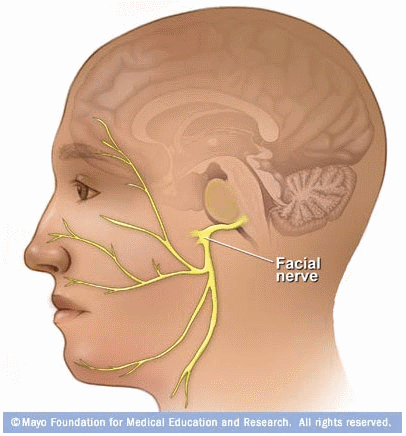Answer: The facial nerve is a mixed sensory and motor nerve with six major branches.
The facial nerve is the seventh of the 12 nerves that originate from the base of the brain. While some cranial nerves strictly transmit sensory information to the brain and others only send motor commands from the brain, the facial nerve does both. About 10,000 neurons make up the facial nerve, with about 7,000 of them being responsible for the motor control that gives a person facial expressions. The remaining neurons are sensory neurons that detect the sense of taste at the anterior 2/3rds of the tongue.
Structure
Cranial nerve VII has six different branches.
1. Cisternal, or intracranial branch
2. Meatal branch
3. Labyrinthine branch
4. Tympanic branch
5. Mastoid branch
6. Extratemporal branch
Another way to classify the branches of cranial nerve VII is to differentiate between the intracranial and extracranial branches. One part of the intracranial branch carries special taste sensory information from the tongue into the gustatory cortex via the chorda tympani. Another branch carries parasympathetic innervation to the sinus area.
One section of the extracranial branch carries motor information from the brain into the set of five muscles that give us our facial expressions.
An injury to the facial nerve results in Bell’s palsy, which manifests as a unilateral paralysis of facial muscles. A person with Bell's palsy puffing their cheeks or showing their teeth may have an asymmetry when performing these tasks.
